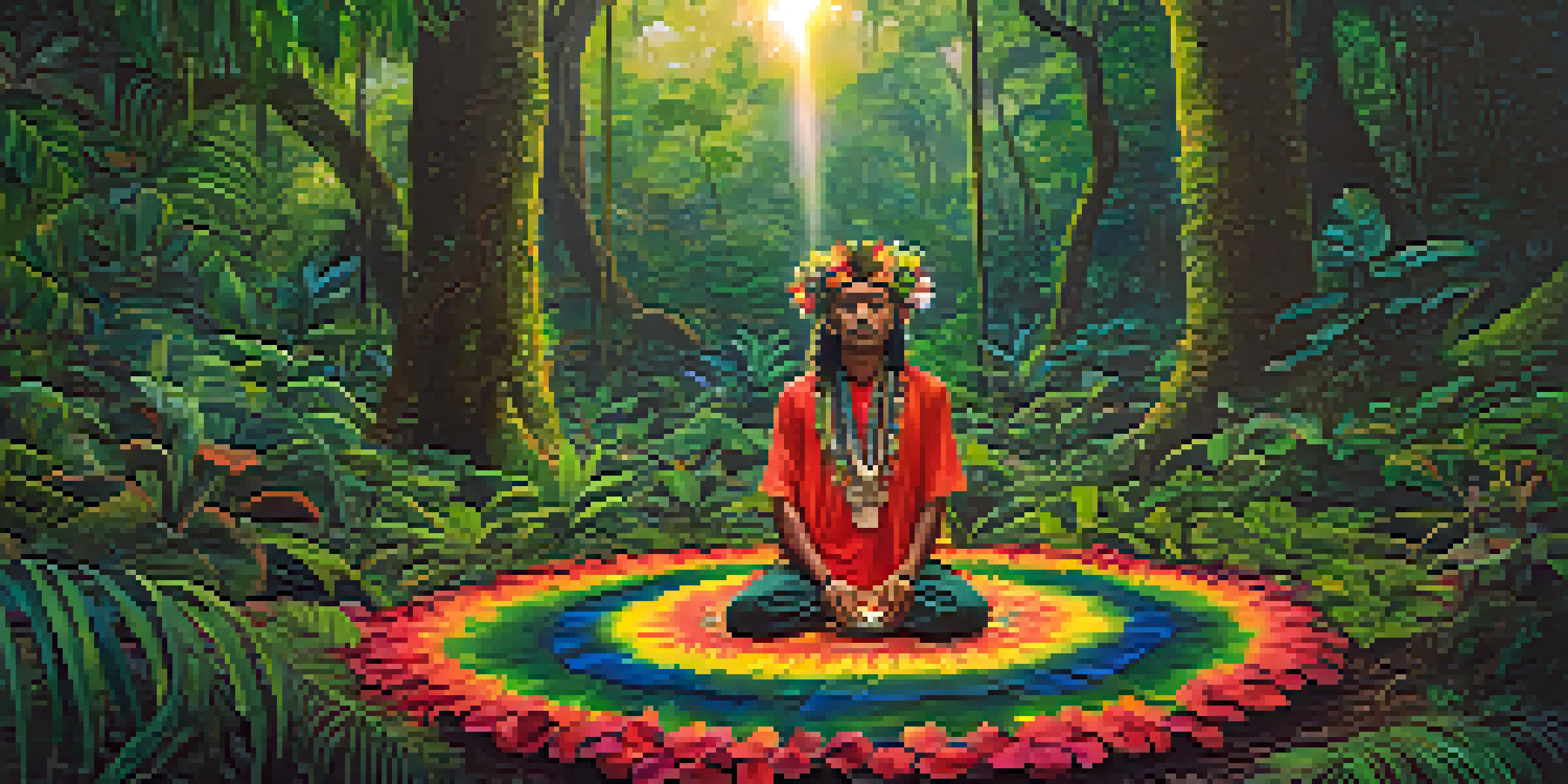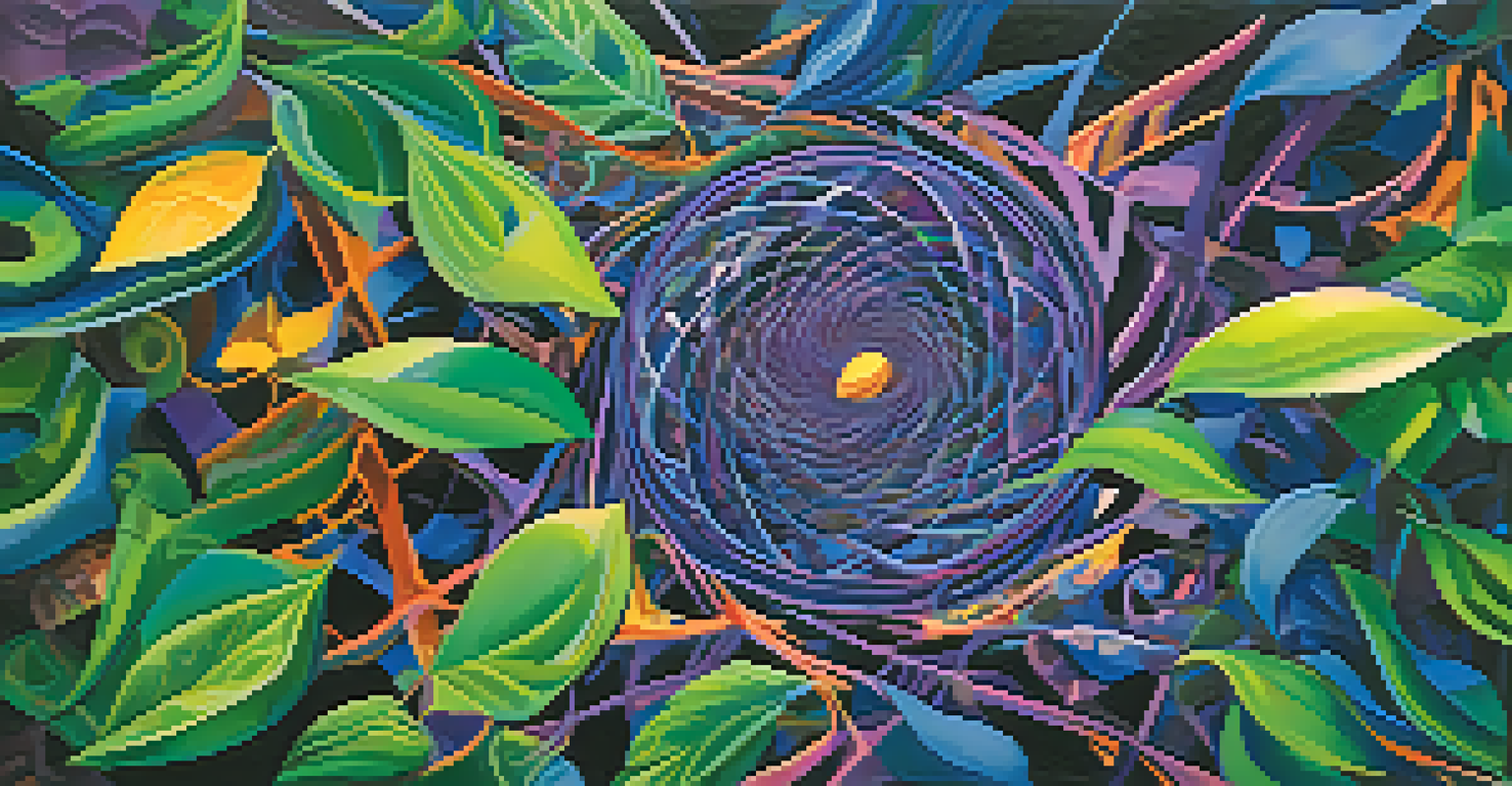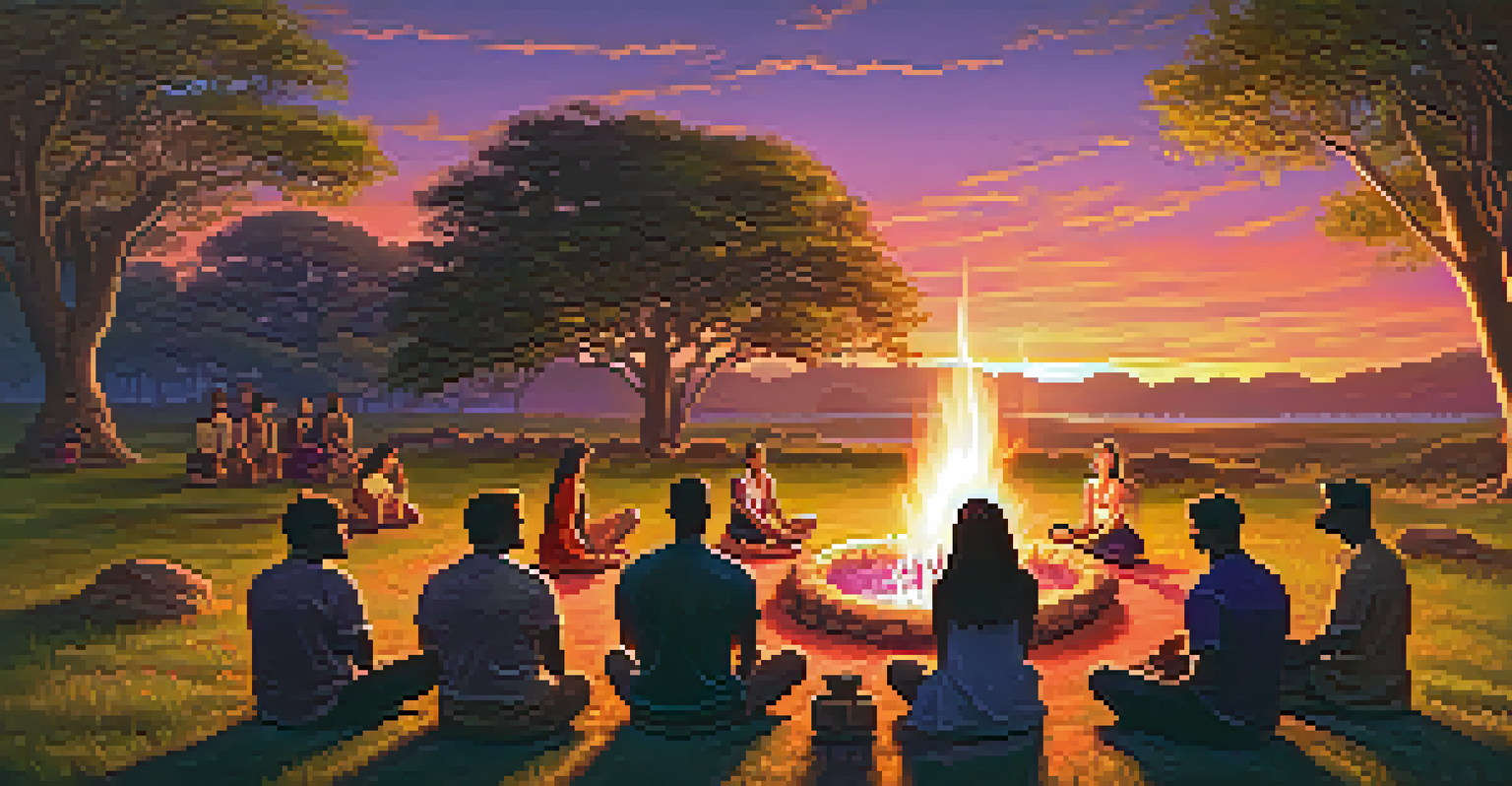The Science Behind Visuals Experienced in Ayahuasca

What is Ayahuasca and Its Cultural Significance?
Ayahuasca is a traditional Amazonian brew made from the Banisteriopsis caapi vine and other plants, often containing DMT. It’s revered in indigenous cultures for its spiritual and healing properties, serving as a gateway to profound personal insights. People participate in Ayahuasca ceremonies for various reasons, including emotional healing, spiritual awakening, and connecting with nature.
The experience of ayahuasca is a journey into the self, where the visuals become mirrors reflecting our inner landscape.
The ceremonies are typically guided by a shaman, who leads participants through the experience, ensuring a safe and supportive environment. This cultural context is crucial, as it shapes the expectations and mental states of those who consume the brew. Understanding Ayahuasca’s role in these traditions helps us appreciate the depth of the visual experiences it can induce.
As we delve deeper into the visuals experienced during Ayahuasca journeys, it’s essential to recognize the interplay between culture, intention, and the mind. The significance of these experiences can vary widely from person to person, influenced by their background and the context of the ceremony.
The Role of DMT and Brain Chemistry
DMT, or dimethyltryptamine, is a powerful psychedelic compound found in Ayahuasca. When ingested, it interacts with serotonin receptors in the brain, particularly the 5-HT2A receptor, which plays a significant role in mood and perception. This interaction is believed to create the intense visual experiences often reported during Ayahuasca ceremonies.

Studies suggest that DMT may induce a state of altered consciousness, leading to vivid imagery, geometric patterns, and even encounters with seemingly sentient beings. These visuals can be overwhelming yet profoundly insightful, often described as a journey into the subconscious mind. This exploration can reveal hidden emotions, traumas, or truths that individuals may not confront in their daily lives.
Ayahuasca's Cultural Importance
Ayahuasca is a revered Amazonian brew used in indigenous ceremonies for spiritual healing and personal insights.
The science behind these experiences is still being researched, but it's clear that the brain's neurochemistry significantly influences the vivid visuals associated with Ayahuasca. As we continue to study these effects, we gain a better understanding of how substances like DMT can alter perception and consciousness.
Psychological Factors Influencing Visuals
The psychological state of an individual before consuming Ayahuasca plays a crucial role in shaping their visual experiences. Factors like mindset, emotional readiness, and personal intentions can influence the types of visuals encountered. This phenomenon aligns with the concept of set and setting, a popular term in psychedelic research that emphasizes the importance of one’s mental state and environment.
Nature is not a place to visit. It is home, and in the embrace of nature, our mind can unlock profound insights.
For instance, someone entering the experience with fears or unresolved issues might encounter darker, more challenging visuals, while another person open to healing may perceive bright, uplifting imagery. It’s fascinating how our thoughts and emotions can manifest visually, transforming the Ayahuasca journey into a mirror reflecting our inner landscape.
This interplay between psychology and the visual experience highlights the therapeutic potential of Ayahuasca. By understanding our own mental states, we can approach the experience more mindfully, potentially leading to more positive and transformative visuals.
Visuals as a Gateway to Self-Discovery
Many participants describe the visuals experienced during Ayahuasca as a form of communication from their subconscious. These images can reveal aspects of ourselves that we might be unaware of, providing valuable insights into our psyche. This process of self-discovery is often described as cathartic, allowing for emotional release and healing.
The ability to visualize complex emotions and thoughts can also assist in integrating these experiences into our everyday lives. For example, someone might encounter a swirling vortex representing their anxiety, which can help them understand and address that feeling in their waking life. This unique form of visualization serves as a powerful tool for personal growth.
DMT's Role in Visual Experiences
DMT, a key compound in Ayahuasca, interacts with brain receptors to create vivid visual experiences and altered consciousness.
In this way, the vivid visuals experienced during Ayahuasca journeys become more than mere hallucinations; they are transformative insights that guide individuals toward a deeper understanding of themselves and their place in the world.
The Connection Between Nature and Visuals
Nature plays an integral role in Ayahuasca ceremonies, often taking place in lush, serene environments. This connection to the natural world can enhance the visual experiences participants undergo. Many report seeing vibrant colors, intricate patterns, and landscapes that reflect the beauty of their surroundings, deepening their sense of unity with nature.
The sensory input from the environment, combined with the effects of DMT, can lead to breathtaking visuals that feel both familiar and otherworldly. This phenomenon underscores the importance of setting, as a peaceful and natural environment can amplify positive experiences. The visuals often evoke feelings of interconnectedness with all living things, fostering a sense of belonging and harmony.
Thus, the relationship between nature and the visuals during Ayahuasca ceremonies cannot be overstated. It enhances the overall experience and provides a grounding element that many find profoundly healing.
The Impact of Integration on Visual Experiences
After an Ayahuasca ceremony, the process of integration becomes essential for understanding and incorporating the visuals experienced. This phase involves reflecting on the insights gained and applying them to one’s life. Without proper integration, the powerful visuals may fade into memory, losing their potential for transformation.
Participants are encouraged to journal, seek therapy, or engage in discussions with others who have shared similar experiences. This helps solidify the lessons learned and ensures that the visuals are not merely fleeting moments but catalysts for lasting change. Integration is a bridge connecting the Ayahuasca experience to everyday life.
Integration is Key for Healing
The integration process after Ayahuasca ceremonies is essential for understanding and applying the insights gained from visual experiences.
The impact of this process can be profound, as individuals learn to navigate their emotions and thoughts more effectively. By actively engaging with the visuals and insights, participants can foster personal growth and resilience, turning their Ayahuasca journey into a lifelong resource.
Future Research on Ayahuasca and Visuals
As interest in Ayahuasca grows, so does the need for more research into its effects, particularly regarding visual experiences. Scientists are exploring the neurobiological mechanisms behind these visuals and their implications for mental health treatment. Understanding how Ayahuasca influences perception could pave the way for therapeutic applications.
For example, researchers are investigating the potential of Ayahuasca in treating conditions like PTSD, depression, and anxiety. The vivid visuals experienced may play a role in helping individuals confront and process traumatic memories, leading to healing. This area of study is still in its infancy, but the initial findings are promising.

Future research will also focus on the long-term effects of Ayahuasca experiences on mental well-being and personal development. As we continue to unravel the science behind these profound visuals, we can better understand their potential benefits for individuals seeking healing and self-discovery.